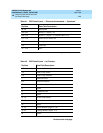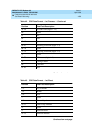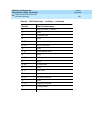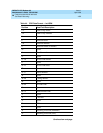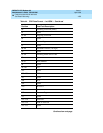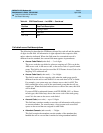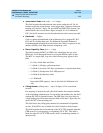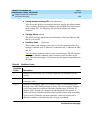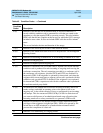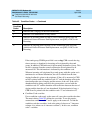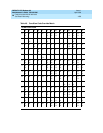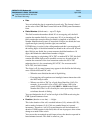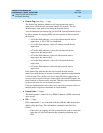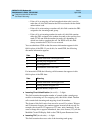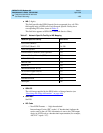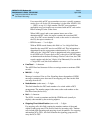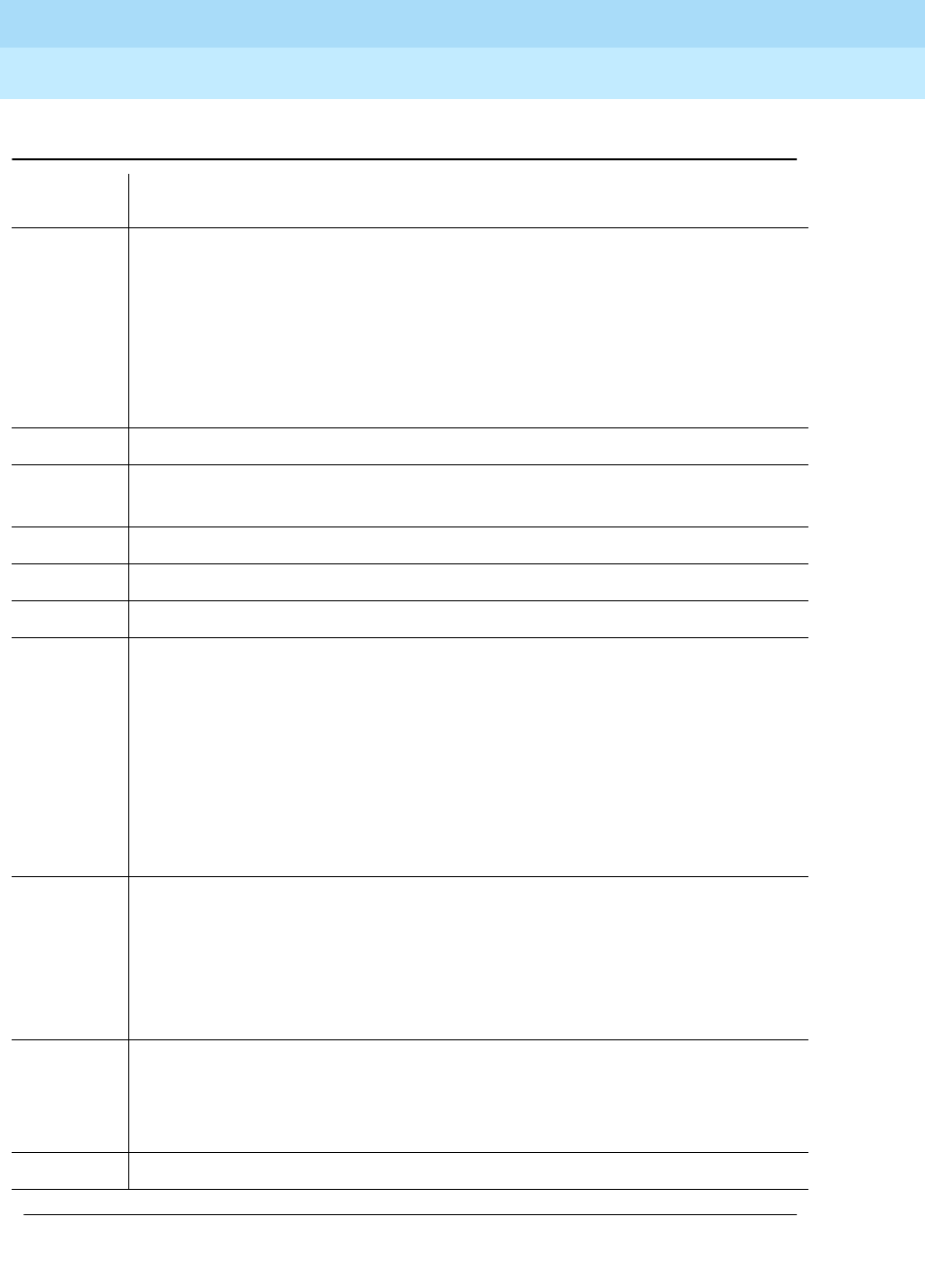
DEFINITY ECS Release 8.2
Administrator’s Guide
555-233-506
Issue 1
April 2000
Features and technical reference
1257Call Detail Recording
20
6 (E) Identifies calls that are not recorded because of resource exhaustion. A
record with this condition code is generated for calls that are routed to the
attendant or calls that require CDR to overwrite records. This also includes
ISDN calls that did not complete at the far end, for which the Q.931 message
included a cause value. It does not include ISDN calls that receive inband
tones.
The record includes the time and duration of the outage.
7 (G) Identifies calls served by the AAR or ARS Selection feature.
8 (H) Identifies calls which have been served on a delayed basis via the Ringback
Queuing feature.
9 (I) Identifies an incoming or tandem call, or an incoming or tandem NCA-TSC.
A Identifies an outgoing call.
B Identifies an adjunct-placed outgoing call.
C (L) Identifies a conference call. For trunk CDR, a separate call record with this
condition code is produced for each incoming or outgoing trunk serving the
conference connection. The only extension recorded for a conference call is
the conference call originator, provided ITCS and OTCS are disabled. For
intraswitch CDR, if the originator is optioned for intraswitch, each time the
originator dials a non-trunk party a separate call record is produced with this
condition code, provided ITCS is disabled. If the originator is not optioned
for intraswitch CDR, a separate record with this condition code is produced
for each intraswitch party dialed.
E (N) An ineffective call attempt due to facilities not being available, such as all
trunks are busy and either no queuing exists or the queue is full on an
outgoing call, or the called extension is busy or unassigned for an incoming
call attempt. This also means an ISDN Call By Call Service Selection call
was unsuccessful because of an administered trunk usage allocation plan.
Incoming trunk calls to a busy terminal do not generate a CDR record.
F Identifies an ineffective call attempt because of either insufficient calling
privileges of the originator (assigned per FRL), ISDN calls rejected by the
switch due to an NSF mismatch, or an authorization mismatch which
prevents the completion of a data call.
G Indicates a call terminating to a ringing station.
Table 45. Condition Codes —
Continued
Condition
Codes Description
Continued on next page



